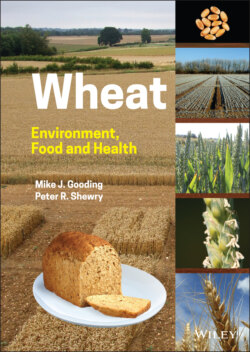Читать книгу Wheat - Peter R. Shewry - Страница 38
1.5.2 Endosperm Texture
ОглавлениеThe classification of wheat into hard and soft types (Chapter 8) is determined largely by the degree of cohesion between the protein and starch granules within the starchy endosperm, with hard wheats requiring greater force to break the grain and reduce the starchy endosperm to flour. Hardness is strongly but not entirely genetically determined, particularly by variation at the Hardness (Ha) locus on the short arm of chromosome 5D (Turnbull and Rahman 2002). When milled, hard wheats yield coarser but more evenly shaped flour particles. The flour is also more easily separated from the bran, and the particles flow easily over surfaces and through sieves (Kent and Evers 1994; Carson and Edwards 2009).
Endosperm texture can be determined by standardized grinding and sieving to weigh the proportion of material that will pass through a mesh. This is the basis of the Particle Size Index (PSI) determination with soft wheats having a greater proportion of throughs (and therefore greater PSI) than hard wheats (Carson and Edwards 2009). Near‐infrared reflectance (NIR) calibrated to PSI is routinely used for rapid determination of grain hardness at mill intake. Automated determination of hardness can also be made on a single grain basis using the Perten Single Kernel Characterization System (SKCS) (Pearson et al. 2007). This measures the weight, moisture content, and crush profiles of individual seeds. The standard sample size is 300 kernels and the software provides data on the distributions of the parameters.
